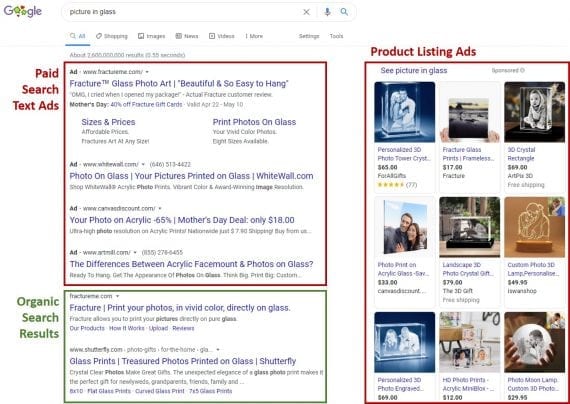Search engine optimization is the practice of configuring your site to increase organic traffic and conversions driven by Google, Bing, and others. Part science and part art, SEO includes elements from site development, user experience, content creation, and community relations, as well as an understanding of search engines and their algorithms.
This post begins a weekly primer in SEO, with the goal of addressing all foundational aspects. In the end, you’ll be able to practice SEO more confidently and converse with others regarding important SEO challenges and opportunities.
There are three core aspects of SEO:
- Indexing: Search engines’ ability to crawl and index your web pages.
- Relevance: The relevance of your content.
- Amplifying: Through links, strengthen your content’s relevance and authority signals.
Optimizing the relevance and authority signals your site sends to search engines can increase your rankings, which drives visitors to your site. The more relevant the signals, the more targeted the visitors (to convert to customers).
Every search represents a desire for information or products. Thus searches related to your company and products can increase your brand awareness and drive consumers to your site.
Consider that Google alone fields more than 60,000 searches per second on average. That’s a lot of people with a lot of desires. And with an estimated $602 billion in retail and B2B ecommerce sales generated in the U.S. in 2019, search engines can drive a ton of shoppers to your site.
But prominence on search results goes beyond competitive organic listings.
Search queries can also trigger advertisements — paid search listings at the top, right, and bottom of the page for desktops and laptops, and in a single column for smartphones. Organic search results are sandwiched in the middle (for desktops and laptops), as shown below for a sample product search.

Google’s U.S. search results page on a laptop computer for the query “picture in glass.” Click image to enlarge.
There is no fee to search engines to appear in organic results. Placement is earned — not paid for like an ad — so you cannot rank higher by paying, say, Google.
However, with all of the elements on the search results, it is increasingly difficult to claim a spot on the first page. When Google places, at the top, four text ads or a Product Listing Ads carousel, there may be room for just one or two organic search listings.
Still, organic search remains a high-performing marketing channel for most ecommerce businesses. Some studies put the average traffic and revenue driven by organic search at around 50 percent and 40 percent, respectively.
But in my experience, it varies widely based on the size of the business, and the maturity and spend of their entire marketing mix. The higher the marketing spend for other digital channels — social, email, search ads — the lower the organic search percentage, likely.
I’ve seen businesses that drive 75 percent of their traffic and revenue via organic search. But that level of dependence is risky because a single algorithm update could decimate revenue. However, even a business with a diverse marketing mix should drive at least 10 percent of traffic and revenue via organic search.
Ethical SEO involves making enhancements to your site that drive shoppers long term. It’s not about short cuts, short-term gains, or fooling the search engines’ algorithms. Consequently, while SEO requires time and expertise (which can cost money), the benefits are often long-lasting.
Thus SEO should touch most aspects of an organization — from product planning, marketing, and customer support to the obvious areas of digital strategy, design, development, and deployment.




